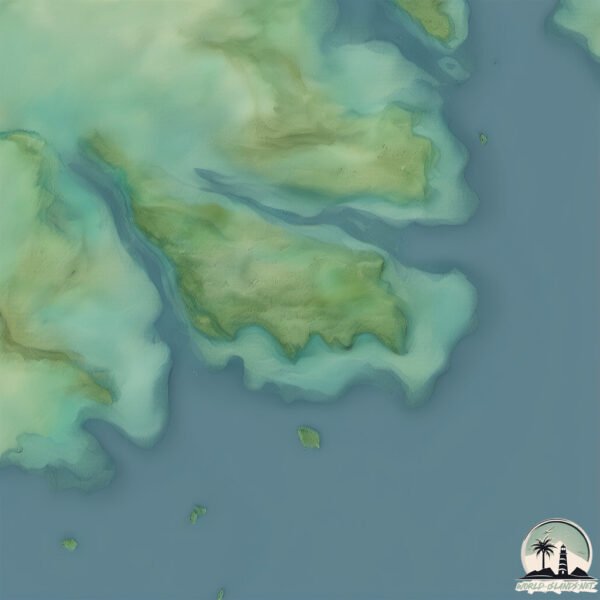Welcome to San Pedro , a Temperate island in the South Pacific Ocean, part of the majestic Pacific Ocean. This guide offers a comprehensive overview of what makes San Pedro unique – from its geography and climate to its population, infrastructure, and beyond. Dive into the details:
Geography and size of San Pedro
Size: 64.3 km²Coastline: 53.9 kmOcean: Pacific OceanSea: South Pacific OceanContinent: South America
San Pedro is a Medium Island spanning 64 km² with a coastline of 54 km.
Archipel: –
Tectonic Plate: South America – A major plate covering the South American continent and part of the Atlantic Ocean, known for the Andes mountain range and significant seismic and volcanic activity.
The geographic heart of the island is pinpointed at these coordinates:
Climate and weather of San Pedro
Climate Zone: TemperateClimate Details: Temperate Oceanic ClimateTemperature: Warm Summer
Climate Characteristics: Known for its moderate year-round temperatures with ample rainfall and no dry season. Warm summers are characteristic.
Topography and nature of San Pedro
Timezone: UTC-04:00Timezone places: America/La_PazMax. Elevation: 517 m Mean Elevation: 160 mVegetation: Evergreen Broadleaf ForestTree Coverage: 98%
The mean elevation is 160 m. The highest elevation on the island reaches approximately 517 meters above sea level. The island is characterized by Plateau: Elevated flatlands rising sharply above the surrounding area, with a maximum elevation over 500 meters but a mean elevation less than 300 meters, forming unique highland areas on islands.
Dominating Vegetation: Evergreen Broadleaf Forest
Vegetation: 4 vegetation zones – Diverse Island
Infrastructure and Travelling to San Pedro
Does the island have a public airport? no .
Does the island have a major port? no .
The mean population of San Pedro is 15 per km². San Pedro is Gently Populated. The island belongs to Chile .
The name of the island resonates across different cultures and languages. Here is how it is known around the world: Arabic: جزيرة شيلوي; German: Chiloé; Spanish: Isla Grande de Chiloé; French: île de Chiloé; Portuguese: Ilha Grande de Chiloé; Russian: Чилоэ; Chinese: 奇洛埃岛
Continuing your journey, Quenay is the next notable island, situated merely km away.
The Ultimate Guide To Ambergris-San Pedro: Where To Stay, Eat, and What To See!
Ultimate Guide To Ambergris-San Pedro: Where To Stay, Eat, And Explore! This is an island off the mainland from Belize City, you ...
The Ultimate Guide To Ambergris-San Pedro: Where To Stay, Eat, and What To See!
Ultimate Guide To Ambergris-San Pedro: Where To Stay, Eat, And ...
Ultimate Guide To Ambergris-San Pedro: Where To Stay, Eat, And Explore! This is an island off the mainland from Belize City, you ...
San Pedro Belize: 8 Best Things To Do In San Pedro Belize
San Pedro Belize Welcome to San Pedro Belize – a Caribbean haven ...
San Pedro Belize Welcome to San Pedro Belize – a Caribbean haven filled with adventure, culture, and relaxation! Nestled on ...
San Pedro Belize Travel Guide: 15 BEST Things To Do In San Pedro Ambergris Caye
This San Pedro Belize travel guide shares the best things to do in San ...
This San Pedro Belize travel guide shares the best things to do in San Pedro. -------------- How to travel more and visit your dream ...
Chile is classified as Emerging region: G20: Group of Twenty – Major economies comprising both developed and emerging countries, representing the world’s largest economies. The level of income is Upper middle income.
News – Latest Updates and Headlines from San Pedro
Stay informed with the most recent news and important headlines from San Pedro. Here’s a roundup of the latest developments.
Loading...
Please note: The data used here has been primarily extracted from satellite readings. Deviations from exact values may occur, particularly regarding the height of elevations and population density. Land area and coastline measurements refer to average values at mean high tide.

